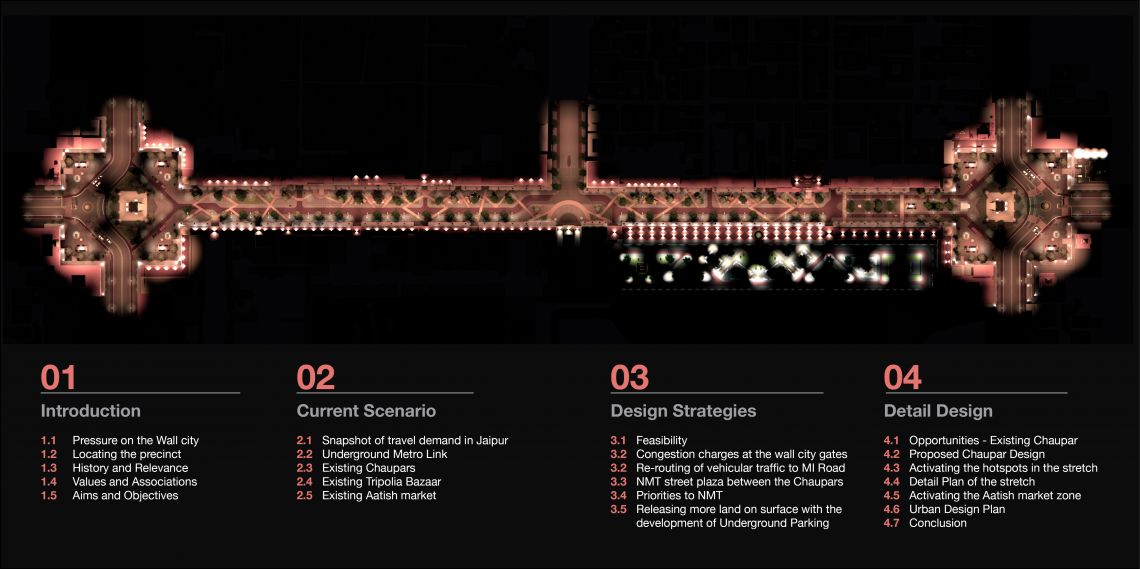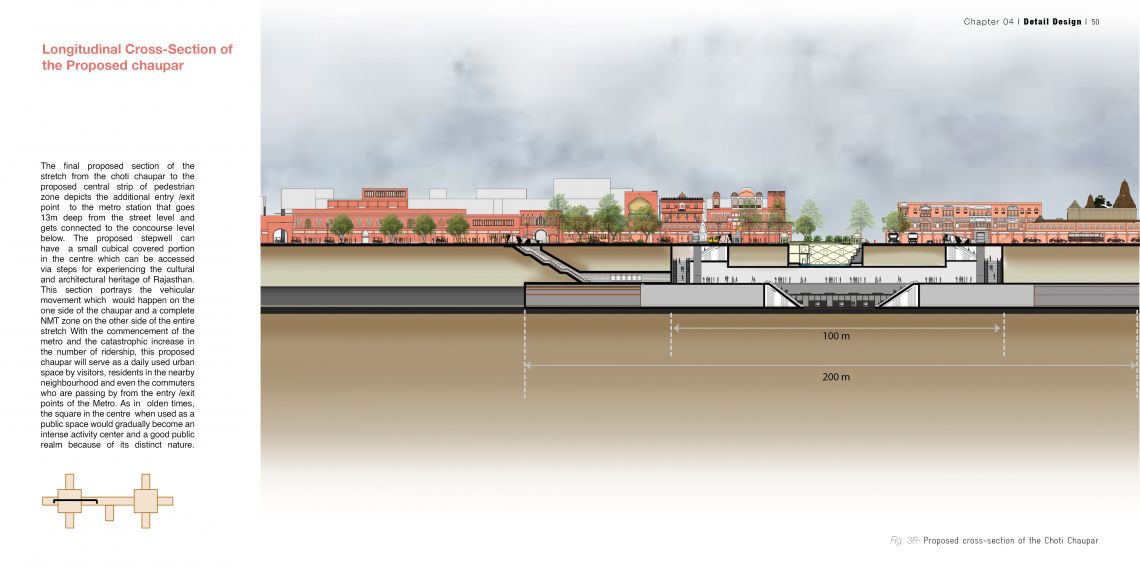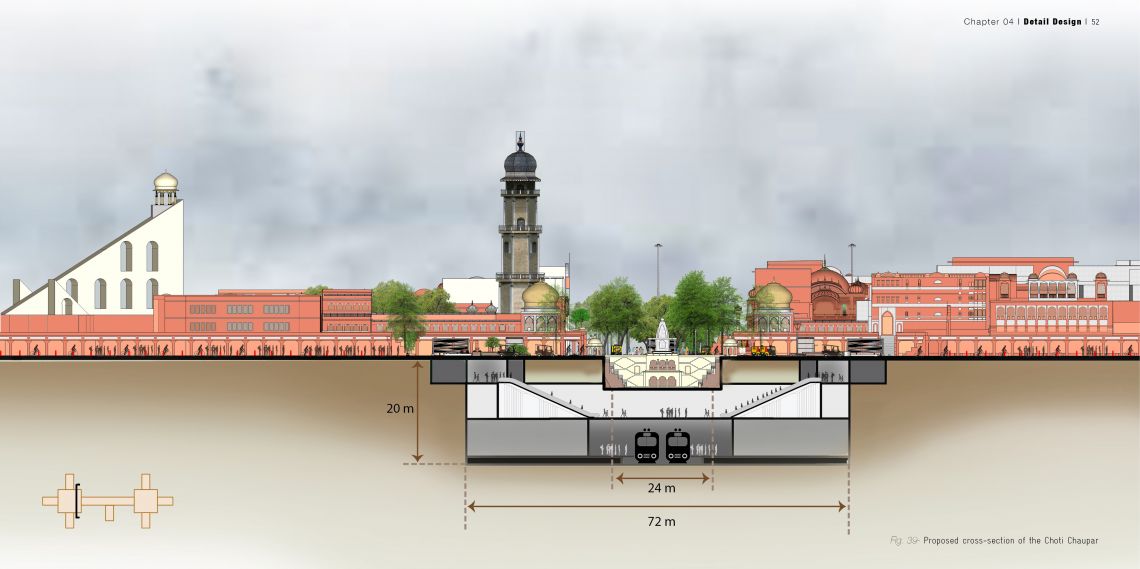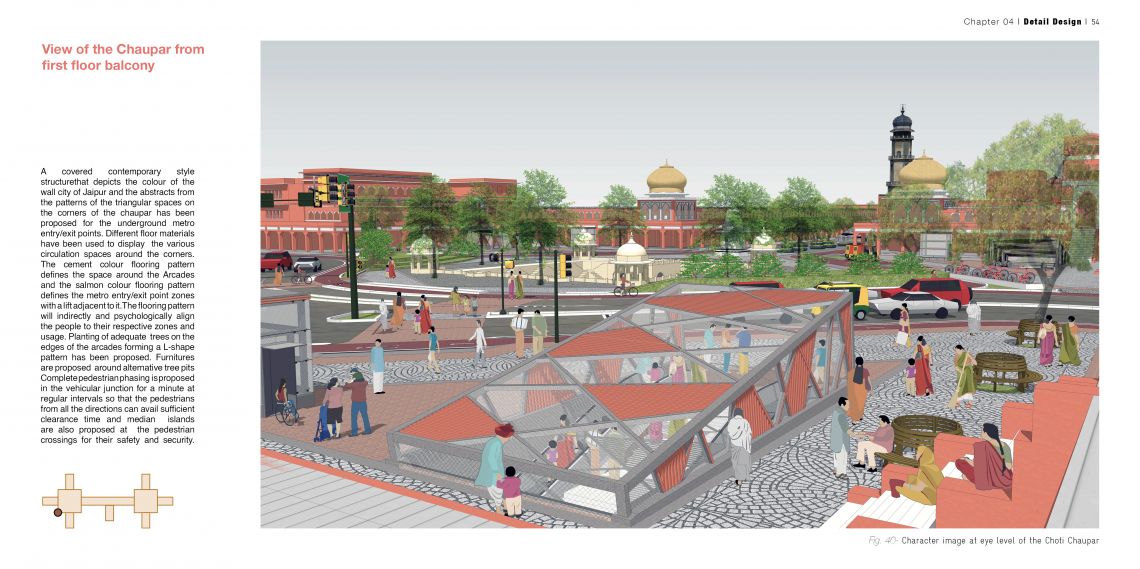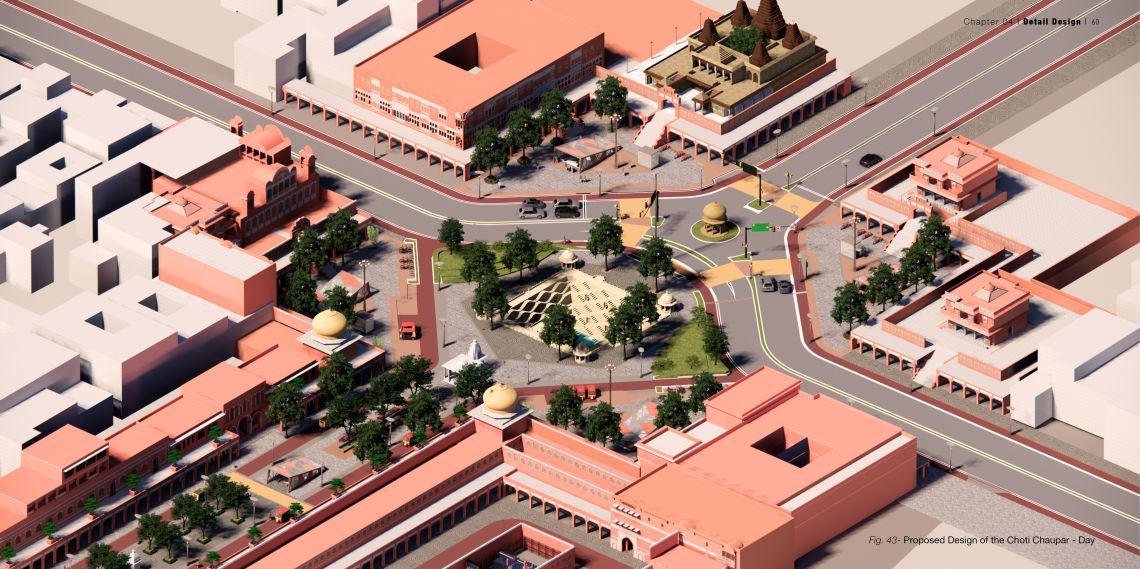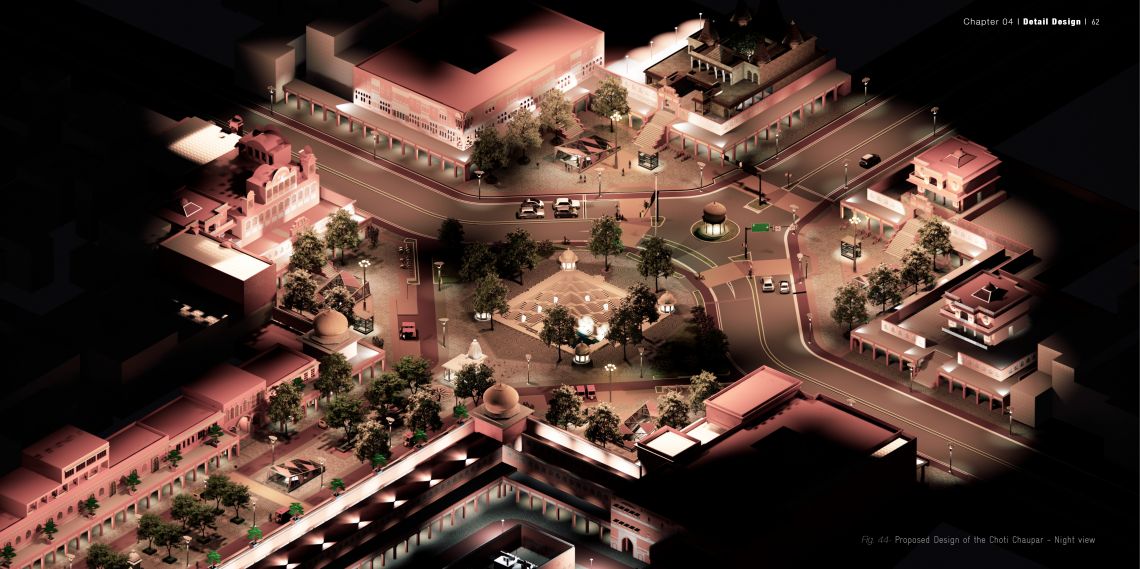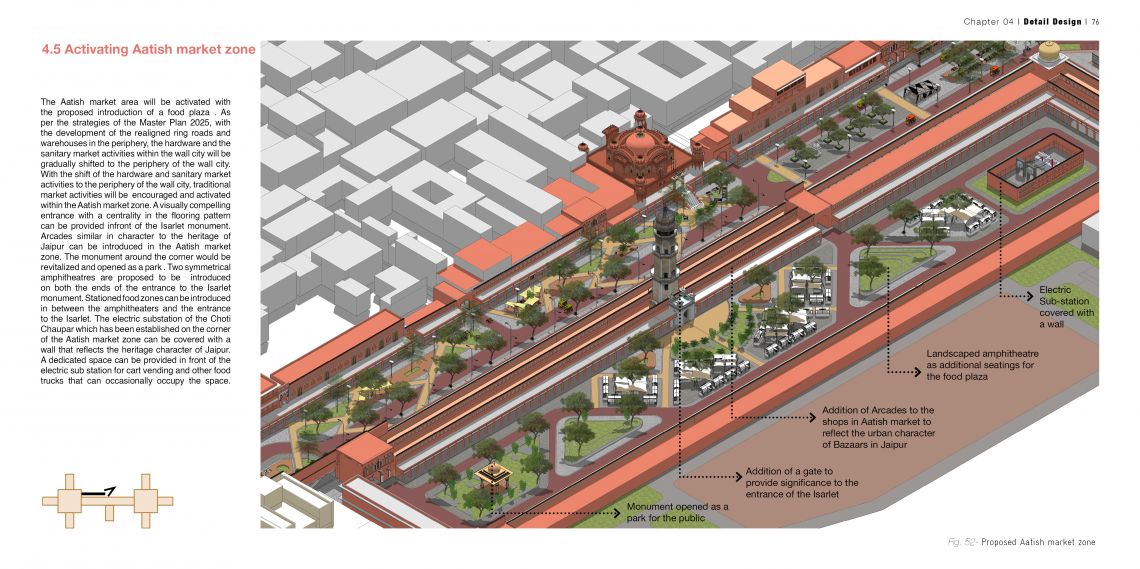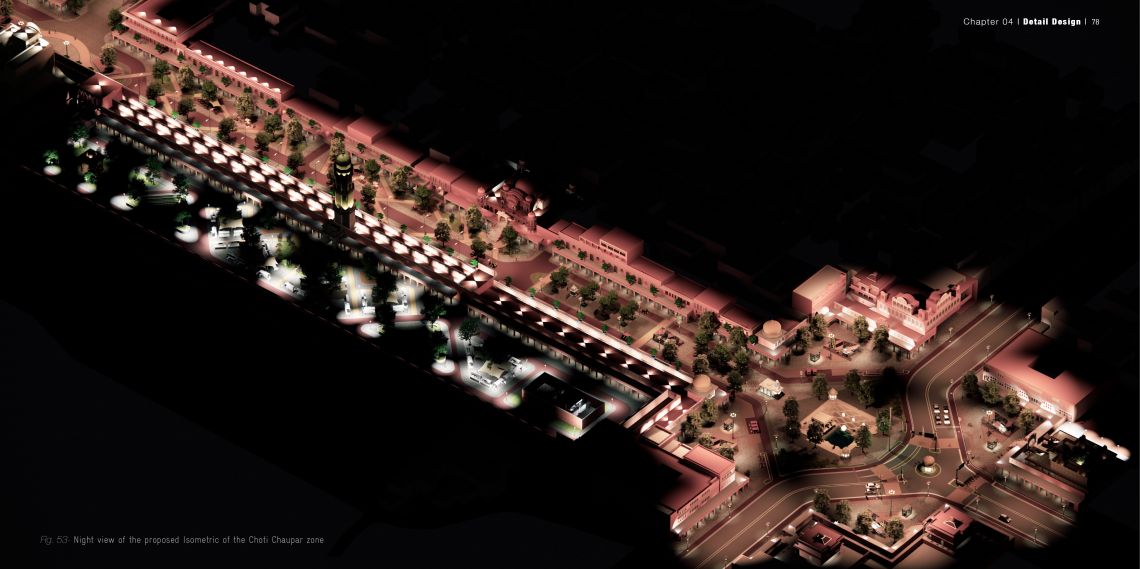Your browser is out-of-date!
For a richer surfing experience on our website, please update your browser. Update my browser now!
For a richer surfing experience on our website, please update your browser. Update my browser now!
The wall city of Jaipur known as ‘The Pink City’ has become one of the second Cities in India to become a UNESCO World Heritage site. Being the first planned Indian city founded by Sawai Jai Singh in 1727, UNESCO states that the wall city shows an interchange of ancient Hindu, Mughal and contemporary western ideas that had shaped the city. With all the major axis within the wall city acting as vibrant Bazaars, the Tripolia Bazaar is a 800m stretch at the heart of the wall city and is a major part of the E-W axis connecting the gates of Surajpole to the east and the Chandpole to the west. This horizontal pilot stretch is anchored by two renowned public squares, namely,The Badi chaupar to the east and the Choti Chaupar to the west. Tripolia Bazaar is named after the three gates (Tripolia gate) at its centre which serves as a direct access to the City palace and is only used by the royal family of Jaipur as per tradition. Given its strategic location and the significant connections from this stretch to various important heritage structures such as the Hawa Mahal, City palace, Islaret tower and several other Havelis and Mandirs, it becomes one of the oldest and the buzziest market of the wall city of Jaipur.
The development pattern of Jaipur has undergone a shift in paradigm due to the tremendous social and economic changes in the urban life over a period of time. Urban character of the Tripolia bazaar anchored by the chaupars at its two ends started decaying with the crumbling infrastructure, congestion due to increased vehicular traffic, haphazard parking and improper utilization of the carriageways. According to the Asia Urbs report, the Tripolia Bazaar stretch is severely impacted by the frequent traffic congestions and the traffic problems escalate heavily during peak tourist seasons. The tussle between motorists and pedestrians to use the limited Right of Way are on a constant rise because of the absence of pedestrian or bicycle infrastructure. The chaupars which were treated as an intensive activity centre and a successful public realm in the past is merely used as a four-way vehicular junction now. And the dilapidated step well at its centre is used as a vehicular roundabout which is hardly accessed by the pedestrians. Encroachment of street vendors within the arcades are a hinderance to the cultural walking tour, street food walking tour etc.
To make Jaipur City a most happening place to sustain the population and economic growth, a mass transit facility has been introduced by JMRC to encourage commuters to use public transportation facility. In this context, Tripolia Bazaar has been identified as a potential stretch within the wall city and the chaupars are connected with an underground metro link. The 11 km metro link called the Pink line starts as an elevated line from Mansarovar and enters the wall city of Jaipur as a underground line of 2.3 Km from Chandpole gate and terminates at Badi chaupar. Within the SCP delineated area, the Smart Cities Mission have given proposals for the pedestrianization of the Krishna circuit in the City palace urban block which starts from the Talkatora lake in the northern end and stretches down till Tadkeshwar temple via the central portion of the Tripolia Bazaar.
This project identifies Tripolia Bazaar as a potential stretch and calls for making it an NMT Stretch in order to restore its lost glory.. In this context, the major objective of this project is to convert the choked stretch of Tripolia Bazaar into a visually appealing street having aesthetic and environmental values. This project will also focus on the revamping the decaying urban character of the Chaupars and the revival of the stepwells to create a good public realm in the urban square. This will include, restriction of the entry of vehicles from the Badi and the Choti chaupar to the Tripolia Bazaar. This will facilitate close to half pedestrianization of the chaupars and the 800m stretch Tripolia bazaar as a NMT Zone with environmentally friendly vehicles (e-rickshaws, bicycles) to ply the narrow streets. The vehicular traffic will be diverted to M.I. Road, a 200 feet major arterial road running parallely at a distance of 800m from Tripolia Bazaar thus reducing the pressure of vehicular congestion within the wall city. An underground parking facility is proposed in the area designated as adaptive reuse byJaipur Smart cities Mission. A brisk move is proposed to shift the hardware and sanitary shops from the Aatish market to outside the wall city and to encourage more traditional markets within the designated area. The existing surface parking facility monitored by the Jaipur Nagar Nigam within the zone of Aatish market will be replaced by a food plaza.
With the two underground Metro stations at the Chaupars, this project is a feasible way to improve the access and linkages for the pedestrians within to create continuous, walkable and accessible city centre rich in its heritage and tourism. Pedestrianization of the Tripolia Bazaar and the Krishna pedestrian circuit proposed by the SCP, together will upgrade the liveability, safety, quality of urban spaces and accessibility to various public transport facilities. Thus, the residents of the wall city would undergo an organized transformation, the tourists to explore and experience the culture of Rajasthan in a better way and the shopkeepers to upgrade with a profitable market experience. Gradually, the Jaipur wall city dominated by the motorized vehicular traffic will be converted to a pedestrianized area enabling the city centre to power ahead as a leading tourist destination of all times.
